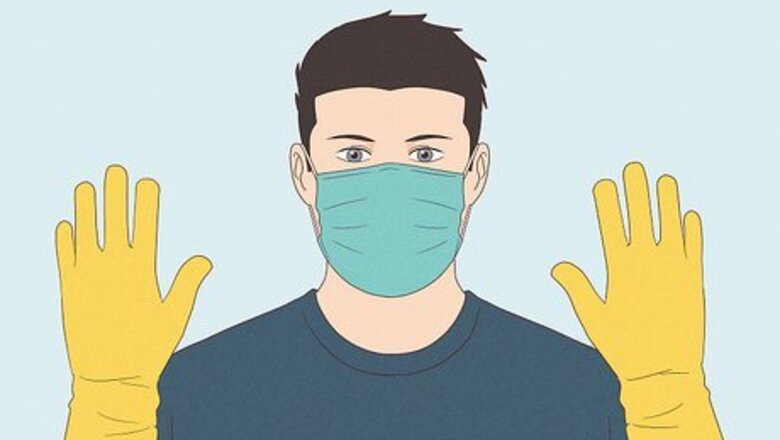
views
- Make an incision in the flesh from the nose, up the center of the skull, and to the base. Use this as a starting point to carve away as much skin and flesh as possible.
- Clean the skull by placing it in a warm water bath with 2 US tbsp (30 mL) per gallon of water of an enzymatic laundry detergent for up to 7 weeks.
- Remove the skull and let it air dry for at least 24 hours. Then set it in a 3-6% hydrogen peroxide bath for 7-10 hours to bleach it until it’s off-white.
Removing the Outer Flesh From the Skull

Wear gloves and a mask to prevent zoonotic diseases. Many diseases that animals carry can be transmitted to humans. These are called “zoonotic diseases,” and may remain dangerous even after the death of the animal. Take precautions with this in mind: Wear gloves and a facemask, and thoroughly wash your hands, arms or any other body part that comes into contact with the carcass.
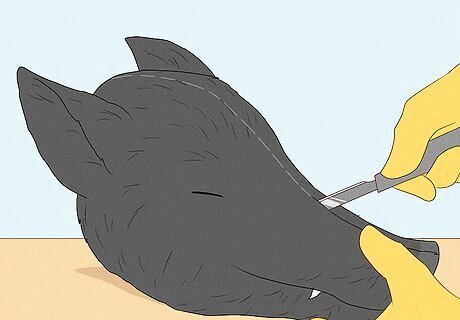
Use a sharp knife to cut from the nose to the back of the skull. Any sharp tool will work, from kitchen knives to surgical scalpels. Make your incision along the centerline of the top of the skull. It doesn’t have to be deep, just enough to give access to the flesh beneath. If you’ve found a skull with the bones already exposed, go ahead and skip to the next section. This is easier if the skull is dried. If yours isn’t, let it sit for 3-4 days in a safe place away from scavengers.
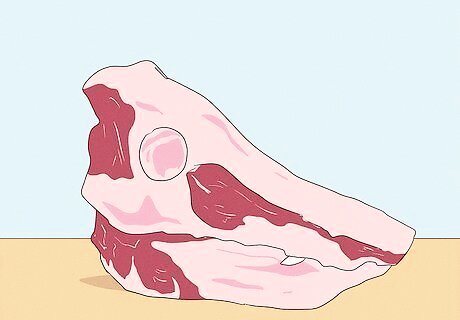
Tear away the skin and flesh. Use your knife and hands to separate the tissue from the bone. Work slowly and carefully to avoid damaging the bone. You don’t need to remove all the flesh, but the more you remove, the easier the next steps will be. Use tweezers to remove flesh from more delicate areas, like the nostrils or around the teeth.

Soak the skull overnight in warm water and remove the brain tissue. Place what’s left of the head in a basin of warm water for several hours. Then insert a looped wire through the base of the skull and into the brain cavity and “scramble” the brain. Rinse away the tissue by plunging the skull in a basin of water and gently shaking it to remove the contents. If you don’t remove the brain, it may swell and crack the skull in later steps.
Methods to Clean the Skull
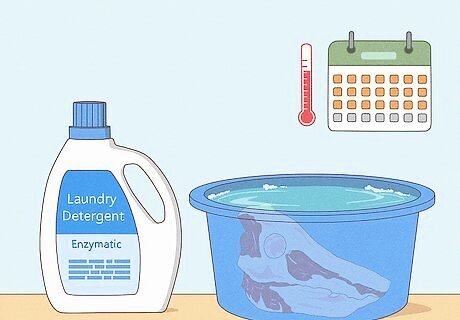
Macerate the skull in water and laundry detergent for a few weeks. “Macerate” means to remove the flesh by soaking. Fill a basin large enough to hold the head with warm water slightly above room temperature, or about 90 °F (32 °C). Then, mix in 2 US tbsp (30 mL) of a laundry detergent (per gallon of water) that’s labeled as “enzymatic” on the packaging. Submerge the skull completely. Every few days, trim away the loosened flesh with a sharp knife, or tear it away with your hands, repeating until the skull is free of flesh. This process takes anywhere from several days to a few weeks, depending on the size of the skull and how much flesh it has. Replace the water every few days with fresh water and added detergent. Use a sieve to catch any teeth that fall from the skull This is the go-to process for many, as it’s the gentlest on the skull, and doesn’t take too long to complete.
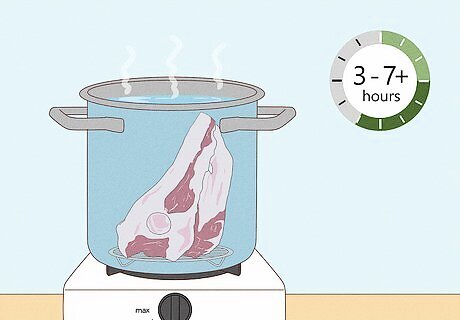
Macerate the skull in hot water for several hours to “cook” the flesh off. Bring a large pot of water with a wire rack positioned in the bottom to a rolling boil and fully submerge the skull. Let it simmer for about an hour, then take it out and use a blade to remove any loose flesh. Then, submerge it for another hour and repeat the process. This process can take anywhere from 3-7 hours or more, depending on the size of the skull and the amount of flesh left on the bone. It tends to be the quickest method. Add 2–3 US tbsp (30–44 mL) of an enzymatic laundry detergent to aid the process. Do this outside, since it creates quite an odor.
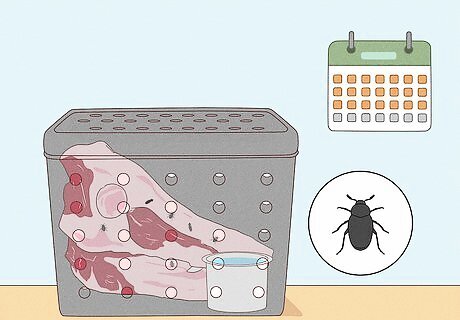
Clean the skull in a box with Dermestid beetles for several weeks. This method lets insects do all the work. Let the skull air dry for 2-3 days. Then, place it in a steel container with small air holes, like a drum or a bucket, along with at least 5 or so Dermestid beetles or larvae, which feed on flesh, and a smaller container of water to provide humidity. Leave the container in a dry place for a few days or up to several weeks, checking the progress every day or so. Dermestid beetles can be acquired from decaying vertebrates, or from select online retailers. A similar method is to leave the skull in a wire cage near or on top of an anthill for several weeks.
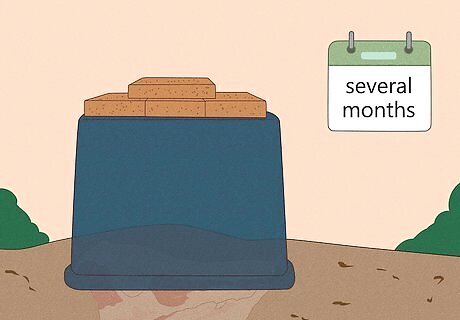
Clean the skull by burying it in the earth for several months. Dig a hole just large enough for the skull, then place the skull inside and cover it with dirt. Cover the site with an inverted bin topped with bricks to ward off any scavengers, and let the skull decompose for several months. This hands-off approach works best in places with rich soil or lush foliage, where decomposing insects or plants thrive. This process can take up to 10 months for a fully intact animal head. After, spray the dirt off the skull with a gentle stream from a hose. If you’re cleaning a deer skull, leave the antlers above-ground to preserve their natural look.
Bleaching and Preserving the Skull
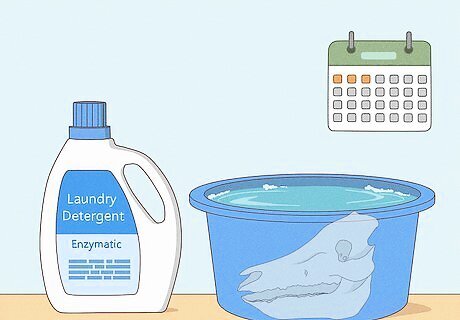
Remove natural grease with water and dish detergent. Skulls often have natural fats or oils remaining on the surface, called “grease.” Let the skull soak for 1-3 days in a mix of water and 2 US tbsp (30 mL) per gallon of enzymatic laundry detergent or grease-fighting dish detergent. Shake it gently every several hours to help the grease slough away. This process is important—if grease is left in the bone, it may start to smell or accumulate on the surface of the bone. Change the water every day, or when it gets cloudy. This step is done when the water is clear after a full day of soaking.

Air dry the skull for up to 24 hours. Leave the skull somewhere safe, with plenty of air circulation, like a garage, to let it air dry for 7-24 hours. Place it on paper towels or newspaper to avoid making a mess.
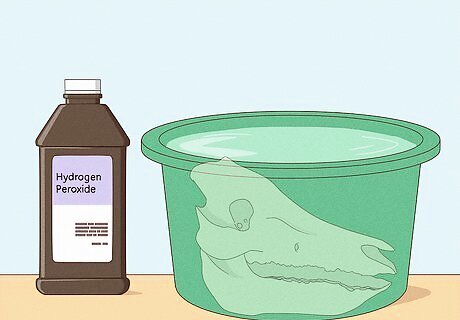
Soak the skull in a hydrogen peroxide solution until it’s whitened. Place the skull in a large container and cover it with a 3-6% hydrogen peroxide solution. Or, dilute a higher concentration solution with water—10–15 fl oz (300–440 mL) of 35% hydrogen peroxide per approximately 5 liters (1.3 US gal) of water. Leave the skull for about 3-4 hours, then check its condition every couple of hours. Bleach it until it’s a natural off-white color. Do not use chlorine bleach, since it can damage bone and teeth.
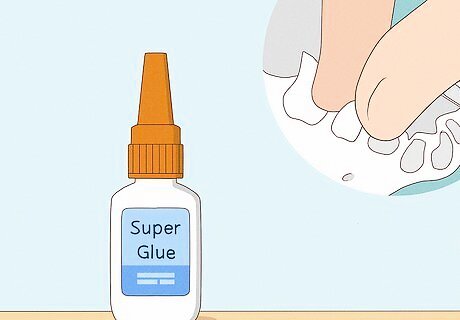
Glue the teeth back into their sockets with super glue. If you used one of the water methods for cleaning an animal skull, the teeth may have fallen out of the tooth sockets. Save the teeth and replace them using a small amount of super glue, or plain white glue. Canine teeth have a tendency to be much smaller than the actual socket they fit in, so wrap a bit of the glue-dabbed cotton around the tooth’s root before gluing it into the socket. Let the glue dry and set for about 24 hours before handling the skull further.
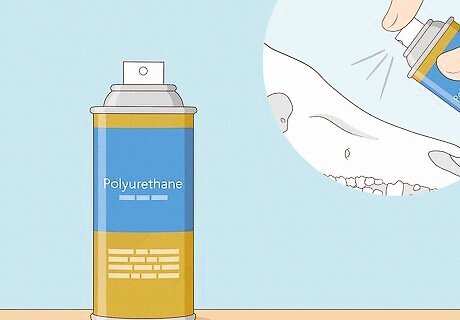
Spray the skull with polyurethane to preserve it. Spray the skull with 3-5 sparing coats of polyurethane, until the surface appears smooth. Let each coat dry for 7-10 hours before applying the next. This leaves a shiny protective finish. Or, brush the skull all over with a mixture of 1 part white glue and 1 part water, or 1 part clear lacquer and 1 part lacquer thinner.




















Comments
0 comment